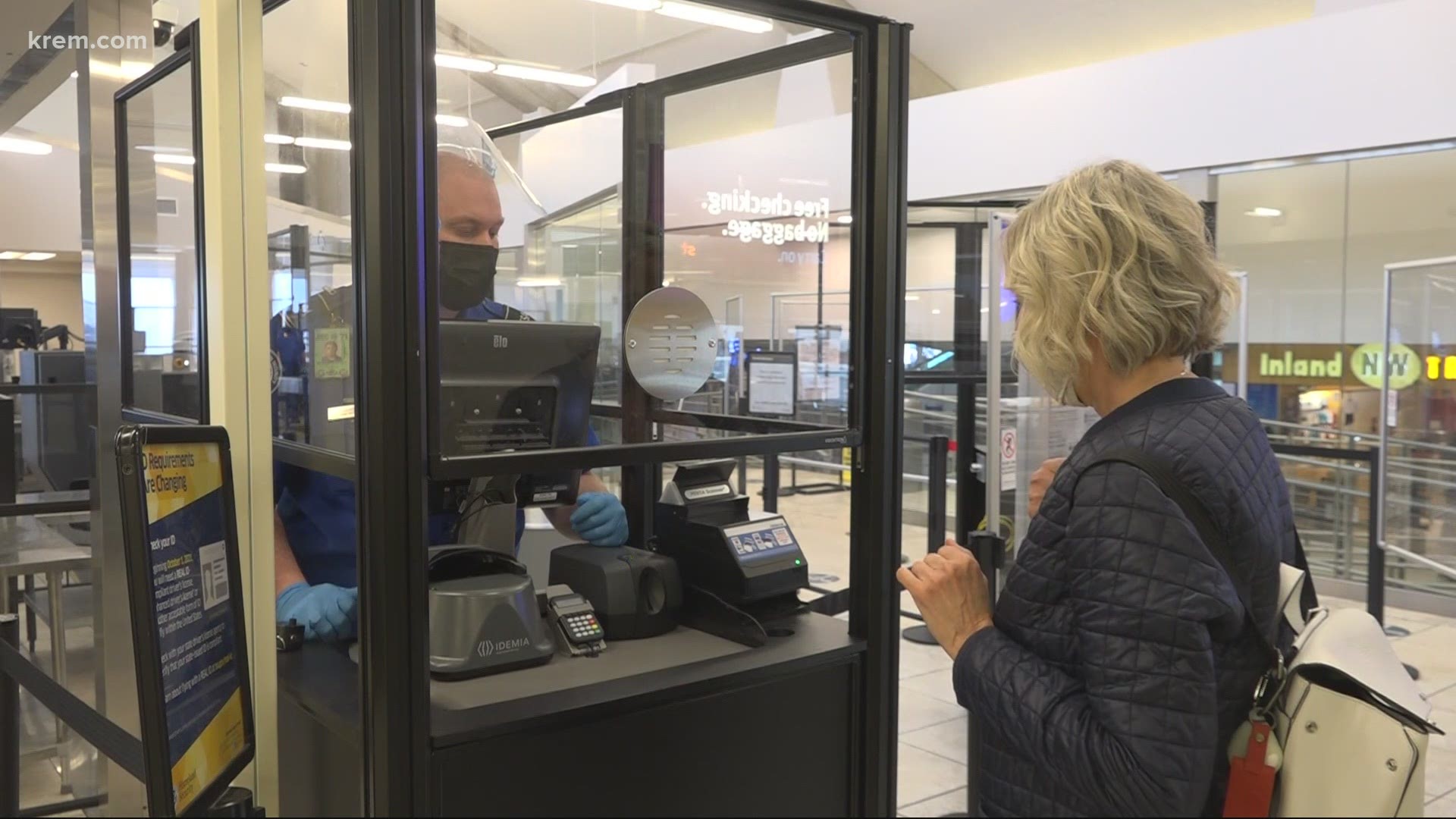SPOKANE COUNTY, Wash. — If you have plans to fly soon, there are changes to TSA checkpoints you need to know.
The TSA rolled out new technology to reduce touch points in the screening process. The goal is to make the screening process safer for both TSA officers and travelers.
"This was already in the pipeline before the pandemic," TSA spokesperson Lori Dankers said. "We accelerated the rollout because we realized there was a real advantage."
Here's what to expect. First, when travelers approach the travel document checking podium, they will be asked to insert or scan their own photo identification. This self-service unit eliminates the need to hand over photo ID and boarding passes to a TSA officer, reducing potential cross-contamination.
The TSA also upgraded its carry-on baggage scanner. It now creates a 3D image of scanned items.
The image can be manipulated on screen to provide a better view of the bag's contents. This allows a TSA officer to clear the contents of a bag for security threats without having to manually open it.
According to the TSA, fewer bag checks is beneficial since it reduces physical contact between travelers and TSA officers. The 3D-scanner allows travelers to keep their electronics in their bag.
"The CT scanner can take longer to resolve what the contents of that bag is," Dankers said. "But if you're the traveler who doesn't need to get a bag check as a result, it really doesn't matter because you are the one who has less physical contact with the TSA currently."
The TSA is implementing this new technology at many airports across the county and in Washington state. At the Spokane International Airport, this technology is only being used at the A-B Concourse checkpoint. There is a chance you may still end up going through the previous scanning process.
The TSA also offers additional tips for traveling during the spring break period:
Step 1: Pack smart
Travelers should be aware of the contents of their carry-on bags and make sure they are not bringing prohibited items to the security checkpoint. To determine whether an item is allowed or prohibited in carry-on luggage, download the MyTSA app and use the “Can I Bring?” feature. By planning ahead, travelers can avoid a bag check and reduce the potential for cross-contamination.
Step 2: Secure items in your carry-on
When removing items from pockets such as phones, keys or loose change, travelers should secure them in their carry-on bags instead of placing them in bins. Bins are a common use item and travelers should use caution or avoid placing personal items in them.
Step 3: Traveling with hand sanitizer
TSA is allowing one liquid hand sanitizer container, up to 12 ounces per passenger, in carry-on bags. Passengers may also bring hand wipes of any size or quantity through security checkpoints.

